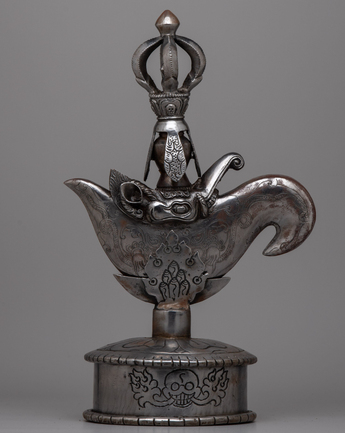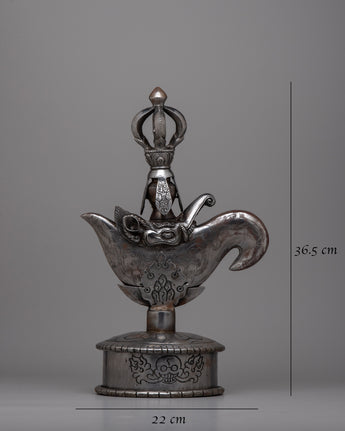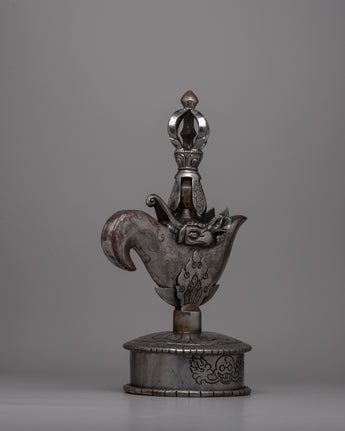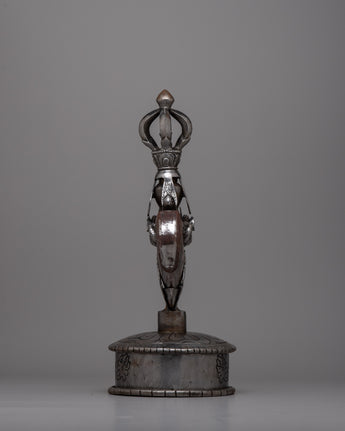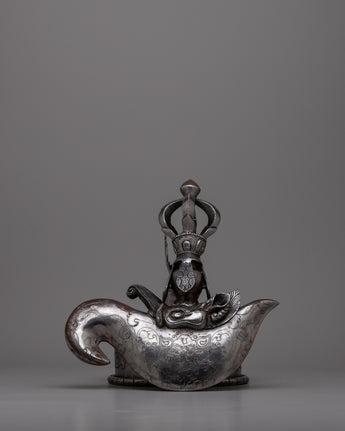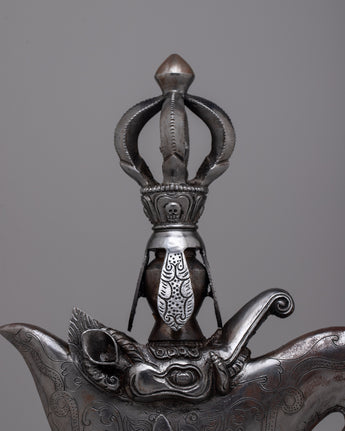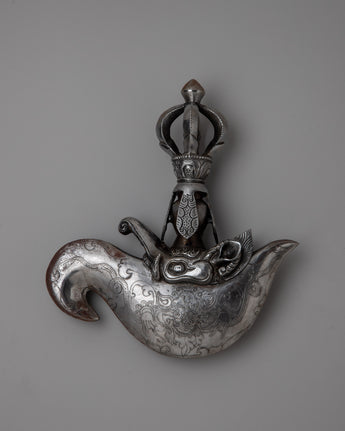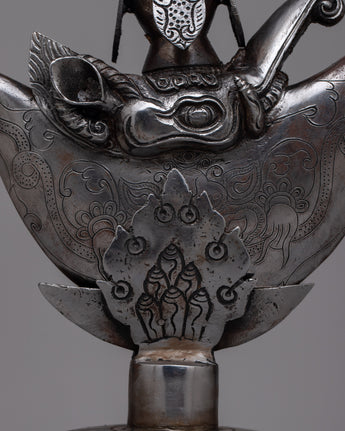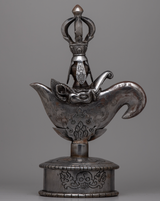
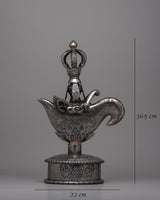
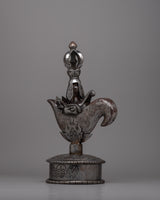
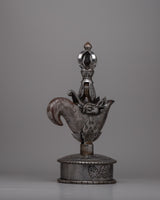
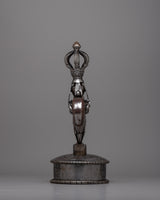
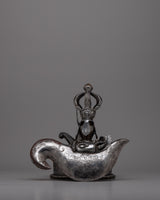
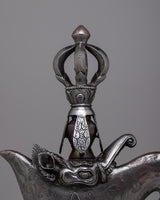
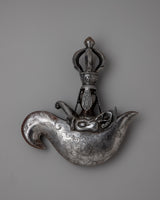
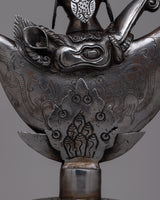
Buddhist Curved Knife | Tibetan Ritual Dagger for Spiritual Protection

100% AUTHENTIC

HANDMADE

FREE SHIPPING
Buddhist Curved Knife
About Ritual Item
The Buddhist Curved Knife, or Kartika as it is often called, is a remarkable example of traditional craftsmanship meticulously made on an iron body. This knife, which stands 36.5 cm tall, is a testament to the artistry and accuracy of its creators. The curving blade shape captures Buddhist symbolism's complex and distinctive traditions, while the iron body guarantees strength and longevity. In addition to being a useful weapon, the Kartika knife is a profound symbol employed in many rites and spiritual practices.
The Buddhist Curved Knife has a stand that is expressly made to allow it to be exhibited when not used. It becomes an important ornamental item that can be displayed in a meditation chamber, shrine, or other holy artifact collections when the stand is added. With its traditional style and curved blade, the Kartika knife has great spiritual meaning, frequently signifying overcoming ignorance and achieving enlightenment. This handcrafted iron knife is a potent reminder of spiritual commitment and the rich legacy of Buddhist traditions, especially when paired with its stand.
Introduction to Phurba
A Buddhist locket is a piece of jewelry designed to hold a small prayer, mantra, or image related to Buddhist practice. The locket may have a design or image of a Buddhist deity, such as the Buddha, or an image of a sacred symbol, such as the lotus flower. It is typically worn as a talisman to remind the wearer of their spiritual path and to offer protection. Some Buddhist lockets are also used as a form of religious devotion and are frequently given as gifts to friends and family members to provide them with spiritual support and blessings.
---------------------------------------
Size: 36.5cm (Height) x 22cm (Width)
Weight: 2.44 kg
Materials: Iron
---------------------------------------
How to set up your own Buddhist Shrine?
-Find a clean, quiet, and uncluttered spot.
-Set up an altar table, and cover it with an altar cloth that calls to you.
-Place your sacred item (statue, thangka, or a picture of Buddha) at the center.


